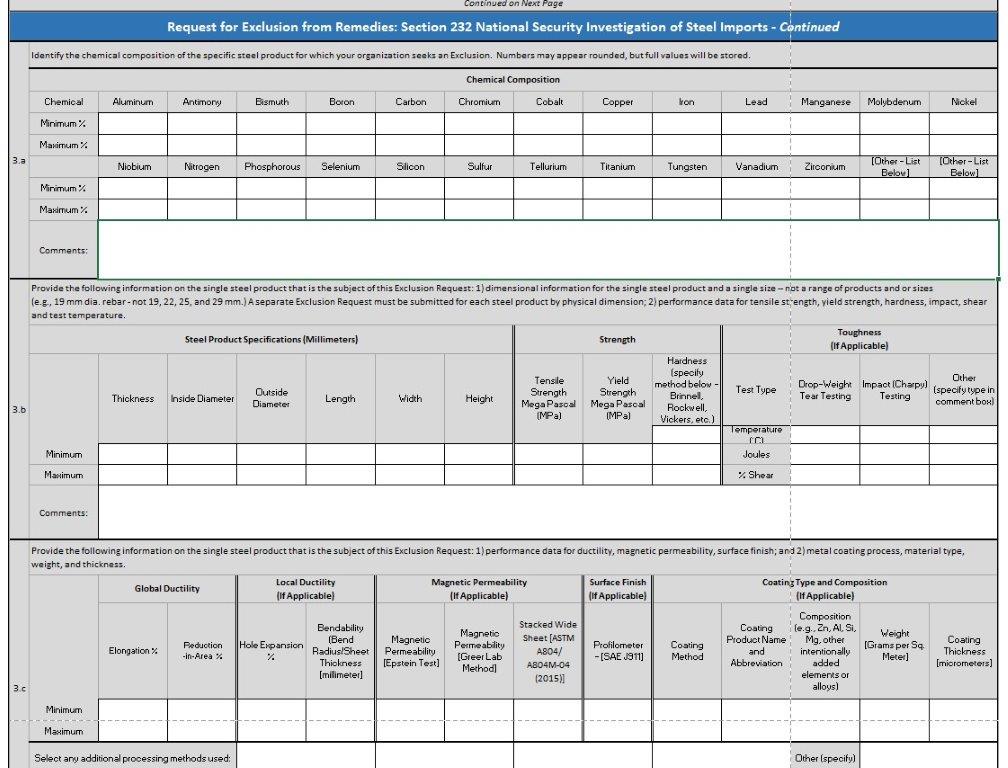So You Want a Steel Tariff Exclusion ...
Mark Green
Posted May 1, 2018
While the Trump administration continues to sort out who will or won’t be subject to steel and aluminum tariffs, the under-reported aspect of the larger tariff-trade story is the potential impact of the tariff exemption process on U.S. industries that use lots of steel – including ours.
The reality is that businesses and industries that rely on imported steel to complete important projects efficiently and economically are in the middle of a nightmarish, bureaucratic mishmash only Washington could foist on private enterprise. That is, the laborious application for an exemption from the steel tariff – an import duty that could end up impacting consumers and our nation’s energy security.
To understand what’s going on, start by imagining the world’s largest snarl of red tape. It might look something like the world’s largest ball of twine, only red:

Thanks to Kansastravel.org for posting the photo of the twine ball. (It’s in Cawker City, if you ever want to visit.) That ball certainly looks impenetrable – which is a pretty good description of the tariff exclusion process set up by the Commerce Department. Here’s one page of the five-page official form companies must submit to apply for an exclusion:

Study the form and you see that a company is required to submit tons of information about the steel it needs – while also documenting that no domestic steel manufacturer can fill the order. Stuff like: a company’s average annual consumption of the steel product for which the exclusion is requested and the number of days required to make the steel at issue. (Remember, steel buyers are filling this out and likely have no way to know how long it takes to make the product.)
Also: the number of days needed to ship the steel from overseas, the chemical composition of the needed steel, the steel’s exact specifications (in millimeters) … And more. Think of the dreaded TPS Reports from “Office Space.” Yeah.
Only it’s no laughing matter. There’s the potential for higher material costs and/or project delays – both of which could hit consumers and hamper national energy priorities. Brigham McCown writes in Forbes:
Many are concerned that everyday consumers will not only see higher prices for many products we use, but America’s steel-reliant energy sector will almost immediately feel the negative impacts of higher steel prices – and that most assuredly means higher energy costs for us all.
These impacts already are developing. Reuters reports that a number of manufacturers are bracing for higher costs because of the 25 percent steel tariff and 10 percent aluminum tariff imposed by the administration. The Los Angeles Times reports that recently, Commerce had posted tariff-exclusion requests for about 650 steel importers – but added that another 5,000 or so hadn’t been publicly listed on its website, including some that were submitted more than a month ago. Commerce says it would take 90 days to review an application, the Times reports, which could be difficult given the thousands of requests it has received.
The scramble includes a number of natural gas and oil companies. Steel is essential for finding and producing energy and transporting it – from drill pipe to well casing to gathering lines to 36-inch pipeline from the oil patch to storage and refinery facilities and then to fuel terminals that supply consumers. Deepening the drama: Steel users in our industry must file a separate report for every type of steel for each individual project, exposing to the public eye quite a bit of proprietary information. At the same time, domestic steel companies can object and the exclusion applicant might not know it. You can imagine the impacts of all of this on new well development and pipeline projects.
A recent study commissioned by API sketches out the possible collateral effects of steel tariffs on the pipeline sector of our industry: disrupted supply chains, delayed projects, lost jobs. The study estimates that a steel price increase of 25 percent would raise the cost of a 280-mile pipeline by $76 million.
As API President and CEO Jack Gerard said when the tariffs were proposed, the action is inconsistent with the administration’s goal of extending the U.S. energy renaissance and strengthening its energy infrastructure. The potential for disruption in a business sector that has boosted the overall economy is large, and the effects could be long-lasting. For the sake of our industry and all the ways it meets the needs of American consumers, manufacturers and other sectors, please fix this process. Gerard:
“We support an exclusion process from the Department of Commerce that is both transparent and flexible. That will allow the U.S. oil and natural gas industry to continue our significant investments in producing, transporting and refining U.S. energy resources, building world-class infrastructure and creating high-paying American jobs. We expect the Department will acknowledge various market realities and take into consideration the complex supply chains of the U.S. oil and natural gas industry and the need for specialty steel not available domestically for many of its projects.”
About The Author
Mark Green joined API after a career in newspaper journalism, including 16 years as national editorial writer for The Oklahoman in the paper’s Washington bureau. Previously, Mark was a reporter, copy editor and sports editor at an assortment of newspapers. He earned his journalism degree from the University of Oklahoma and master’s in journalism and public affairs from American University. He and his wife Pamela have two grown children and six grandchildren.


